Barrat J.L., et al. (eds.)2-86883-685-2, 3540401415
Table of contents :
Title……Page 1
Conférenciers……Page 2
ÉCOLE DE PHYSIQUE DES HOUCHES……Page 5
Lecturers……Page 7
Participants……Page 9
Préface……Page 13
Preface……Page 17
CONTENTS……Page 21
NONEQUILIBRIUM PHASE TRANSITIONS
……Page 34
1 Introduction……Page 36
1.1 Nonequilibrium steady states……Page 37
1.2 Problems with usual thermodynamic concepts……Page 39
2.1 Differences from equilibrium – constructing models with NESS……Page 41
2.2 Generation of long-range interactions – nonlocal dynamics……Page 44
2.3 Generation of long-range interactions – dynamical anisotropies……Page 46
2.4 Driven lattice gases, surface growth……Page 48
2.5 Flocking behavior……Page 49
3 Where do the power-laws come from?……Page 51
3.1 Self-organized criticality (SOC)……Page 52
3.2 Absorbing state transitions and their connection to SOC……Page 54
4.1 Power laws and universality of nonequilibrium distributions……Page 57
4.2 Picture gallery of scaling functions……Page 58
4.3 Upper critical dimension of the KPZ equation……Page 61
5 Quantum phase transitions……Page 63
5.1 Spin chains with .uxes……Page 64
5.2 Effective interactions……Page 68
6 Outlook……Page 70
References……Page 71
MECHANICAL AGING AND NON-LINEAR RHEOLOGY
OF CONCENTRATED COLLOIDAL SUSPENSIONS
……Page 74
1.1 Colloidal glasses?……Page 76
1.2.1 Interactions between model colloids……Page 77
1.2.2 More common colloidal systems……Page 79
1.3 Gels or glasses: Various kinds of soft solids?……Page 81
1.4 Wrapping up the introduction……Page 82
2.1 Concentrating colloidal suspensions: From a “viscous liquid” to a “soft-solid” behaviour……Page 83
2.2 Probing the system in its “soft-solid” phase……Page 84
2.3 Mechanical aging……Page 85
3.1 A Maxwell model with one scalar internal variable……Page 87
3.2.2 Activated hopping……Page 88
3.2.3 A 4-state model……Page 89
3.3.1 Mechanical aging……Page 90
3.3.2 Non-linear “steady-state” rheology……Page 91
3.3.3 More complex topics: Oscillating rheology and transients……Page 92
4.1 Avalanches and “viscosity bifurcation”……Page 94
4.2 Parallel with flow induced transitions: Heterogeneous “banded” flows……Page 95
4.3.1 Adapting the model……Page 96
4.3.2 Fixed stress $Sigma$……Page 97
4.3.3 Fixed shear rate $.Gamma$……Page 98
4.4 Intermediary conclusion……Page 99
5.1 A classification of the phenomenologies……Page 100
5.2 Successes and failures of these models……Page 101
5.3 Better models: More variables? which collective physics?……Page 102
References……Page 104
STRUCTURAL RELAXATION AND RHEOLOGY OF SOFT CONDENSED MATTER
……Page 107
1 Soft condensed matter……Page 110
2 Rheology……Page 112
2.1 Stress tensor……Page 113
2.2 Statistical mechanics of stress……Page 114
2.3 Strain and strain rate……Page 116
3.1 Step-strain response……Page 118
3.2 Oscillatory flow……Page 119
3.4.2 Power law fluids……Page 120
3.4.3 Soft glasses……Page 121
3.6 Simple forms for G(t)……Page 122
4.1 Entanglements……Page 123
4.2 Entropic elasticity……Page 124
4.3 Escape from the tube……Page 125
5.1 Typical experiments……Page 126
5.2 Nonlinear relaxation of polymers……Page 127
5.3 Constitutive equation……Page 129
6 Dumbing down……Page 130
6.1 Dumbell model……Page 131
7 What rheologists want……Page 132
8.1 The effective temperature problem……Page 133
8.3 Bouchaud’s trap model……Page 134
9 The SGR model……Page 136
9.1 Features of the model……Page 137
9.2 Constitutive equation for SGR……Page 139
9.3 Tensorial SGR models……Page 140
10.1 Step stress and step strain……Page 142
10.3 AOFOT?……Page 143
10.4 Weak long term memory……Page 144
10.6 Aging scenarios……Page 145
10.7 Nonlinear aging……Page 147
11.1 Nonmonotonic flow curves……Page 149
11.2 Shear thickening mechanisms……Page 150
12 Rheological instability and oscillation……Page 152
12.1 A simpler model for rheo-instability……Page 154
13 Rheochaos……Page 155
14 More fundamental approaches……Page 156
15 Conclusion……Page 158
References……Page 159
GRANULAR MEDIA
……Page 162
1.1 Basic phenomenology……Page 164
1.2.1 Static properties……Page 167
1.2.2 Tapping and non thermal ensembles……Page 168
2.1 Definition and motivation……Page 171
2.2 Stress distribution and the exponential tail……Page 172
2.3 The “critical” case……Page 174
3.1 Continuous limit of the scalar model……Page 175
3.2 Calculation of the averaged response and correlation functions……Page 178
3.3 Further results: The un-averaged response function……Page 184
3.4 The scalar model with bias: Edwards’ picture of arches……Page 185
4.1 Elasticity and response functions……Page 186
4.2 Indeterminacy at the grain level and isostaticity……Page 188
4.3 Numerical simulations and Edwards’ assumption……Page 189
5.1 A vectorial q-model……Page 191
5.2 A constitutive relation between stress components……Page 193
5.3 Some simple situations……Page 194
5.4 Symmetries and constitutive relations……Page 195
5.5 Boundary conditions and “fragility”……Page 197
6 Experimental and numerical determination of the stress response function……Page 198
7.1 A stochastic wave equation……Page 199
7.2 Calculation of the averaged response function……Page 202
7.3 Generalized wave equations……Page 205
8.1 Introduction and numerical results……Page 208
8.2 A Boltzmann description of force chain splitting……Page 209
8.3 The role of chain merging……Page 212
9 Statics of granular materials: Concluding remarks and open questions……Page 213
10.1 Slow compaction……Page 215
10.2.2 Dynamical heterogeneities……Page 217
10.2.3 Another point of view: Edwards postulate……Page 219
10.3 Granular dynamics and the trap model……Page 221
References……Page 224
SUPERCOOLED LIQUIDS, THE GLASS TRANSITION,
AND COMPUTER SIMULATIONS
……Page 229
1 Introduction……Page 231
2 Supercooled liquids and the glass transition: Important facts and concepts……Page 232
3.1 The Mori-Zwanzig formalism……Page 247
3.2 Application of the Mori-Zwanzig formalism to glass-forming systems……Page 250
4 Computer simulations of glass-forming systems……Page 260
5.1 Static and dynamic properties of a simple liquid with Newtonian dynamics……Page 269
5.2 The relaxation dynamics of a simple liquid with stochastic dynamics……Page 280
5.3 Static and dynamic properties of a network forming liquid……Page 285
References……Page 291
GLASSES, REPLICAS AND ALL THAT
……Page 300
1.1 General considerations……Page 303
1.2 Glassiness, metastability and hysteresis……Page 304
1.3 The organization of these lectures……Page 308
2.1 The definition of the model……Page 309
2.2 Equilibrium properties of the model……Page 310
2.3 The properties of the low temperature phase……Page 314
2.4 A careful analysis of the high temperature phase……Page 318
2.5 The replica method……Page 320
2.6 Dynamical properties of the model……Page 322
3.1 The definition of the models……Page 323
3.2 The replica solution……Page 324
3.3 The physical interpretation……Page 328
3.4 The two susceptibilities……Page 333
3.5 The cavity method……Page 335
4 Complexity……Page 338
4.1 The basic definitions……Page 340
4.2 Computing the complexity……Page 342
4.3 Complexity and replicas……Page 347
4.4 A summary of the results……Page 352
4.5 Some consideration on the free energy landscape and on the dynamics……Page 353
4.6 Small fluctuations……Page 356
5.1 Stochastic stability……Page 358
5.2 A simple consequence of stochastic stability……Page 361
5.3 Fluctuation dissipation relations……Page 362
6 A short introduction to glasses……Page 363
7 The replica approach to structural glasses: General formalism……Page 365
7.1 The partition function……Page 366
7.3 The small cage expansion……Page 367
7.3.2 First order term……Page 369
7.3.4 Harmonic resummation……Page 371
7.3.5 Without replicas……Page 372
8.1 Three approximation schemes……Page 374
8.2 Critical temperature and effective temperature……Page 375
8.3 Cage size……Page 376
8.4 Free energy, specific heat and configurational entropy……Page 377
8.5 The missing dynamical transition……Page 378
8.6 Lenhard-Jones binary mixtures……Page 379
9 Discussion and perspectives……Page 382
Appendices……Page 383
References……Page 389
DYNAMICS OF GLASSY SYSTEMS
……Page 394
1 Introduction……Page 398
2.1 Domain growth……Page 401
2.2 Glasses……Page 404
2.3 Spin-glasses……Page 407
2.5 Rheology and granular matter……Page 409
2.7 Aging……Page 411
2.8 Summary……Page 414
3 Theoretical approach……Page 415
4 Systems in contact with environments……Page 417
4.1.1 Statics……Page 418
4.1.2 Dynamics……Page 420
5.1 Classical systems……Page 422
5.2 Quantum problems……Page 425
6.1 The Fokker–Planck and Kramers equations……Page 426
6.2 Approach to equilibrium……Page 427
6.3 Equilibrium dynamics……Page 428
7.1 Static FDT……Page 430
7.3 Quantum FDT……Page 431
7.4.1 Harmonic oscillator and diffusion……Page 432
7.4.4 A complex bath……Page 433
8.1 Classical models……Page 434
8.2 Supersymmetry (SUSY)……Page 436
8.4 Quantum models……Page 438
8.5 Average over disorder……Page 442
9.1.1 Classical systems……Page 443
9.1.2 Quantum models……Page 448
9.2.1 Classical models……Page 453
9.2.2 Quantum models……Page 456
9.3 Field equations……Page 457
9.5 Single spin equation……Page 458
10.1 Perturbative solution……Page 459
10.2 The mode coupling approximation (MCA)……Page 461
10.3 MCA and disordered models……Page 462
10.4 MCA for super-cooled liquids and glasses……Page 465
11.1 The weak-ergodicity breaking scenario……Page 466
11.2 The weak long-term memory scenario……Page 468
11.3 Slow time-reparametrization invariant dynamics……Page 469
11.4 Correlation scales……Page 470
11.4.1 Properties……Page 471
11.4.2 Definition of a characteristic time……Page 475
11.5 Modifications of FDT……Page 476
11.5.1 Time domain……Page 477
11.5.3 Time-reparametrization invariant formulation……Page 478
11.5.4 FDT part……Page 480
11.5.5 Diffusion……Page 481
12.1 Numerical solution……Page 482
12.2 Solution at high temperatures……Page 483
12.3 Solution at low-T……Page 485
12.3.1 The Lagrange multiplier……Page 486
12.3.2 The stationary regime……Page 487
12.3.3 The aging regime……Page 488
12.3.4 The Edwards-Anderson parameter……Page 489
12.3.6 Discontinuous classical transition……Page 491
12.3.8 Two $p$ models……Page 492
12.3.11 Quantum fluctuations……Page 494
12.3.12 Driven dynamics……Page 495
13.1 Domain growth……Page 496
13.2 Structural glasses……Page 498
13.3 Spin-glasses……Page 499
13.4 Rheology……Page 500
13.6 Driven vortex systems……Page 501
13.9 Critical dynamics……Page 502
13.10 Connection with equilibrium……Page 503
14 Effective temperatures……Page 504
14.1.1 How to measure a temperature……Page 506
14.1.2 Zeroth law……Page 509
14.3 Fictive temperatures……Page 512
14.5 Statistical mechanics……Page 513
15 Metastable states……Page 514
15.1 Equilibrium……Page 515
15.2 Static TAP approach……Page 517
15.3 The TAP equations……Page 519
15.4 Stability of, and barriers between, the TAP solutions……Page 520
15.6 Weighted sums over TAP solutions……Page 522
15.7 Accessing metastable states with replicas……Page 524
15.8 Dynamics and quantum systems……Page 525
16 Conclusions……Page 526
17 Perspectives……Page 532
A Generalized Langevin equations……Page 533
B The Kubo formula……Page 536
D Grassmann variables and supersymmetry……Page 537
E Integrals in the aging regime……Page 539
References……Page 541
EQUILIBRIUM STATES AND DYNAMICS
OF EQUILIBRATION
……Page 549
1 Introduction……Page 551
2 Equilibrium states……Page 552
2.1 Infinite system ground states……Page 553
2.2 Positive temperature states……Page 558
2.3 Number of equilibrium states?……Page 559
3 Dynamics and barriers……Page 561
3.1 Domain coarsening……Page 562
3.2 Dynamics and local equilibrium……Page 565
4 Spin glasses……Page 567
4.1 Scaling scenario……Page 569
4.2 Observation of many states?……Page 573
5 Non-random systems: True glasses……Page 575
References……Page 577
EXPERIMENTAL ANALYSIS OF AGING
……Page 580
1 Introduction……Page 582
2.1 Aging range: A simple quench experiment……Page 583
2.2.1 Historical background……Page 587
2.2.2 Memory experiment on PMMA……Page 589
2.2.4 Deleting memory……Page 592
2.2.5 Double memory……Page 595
2.2.6 Direct comparison with the memory effects in spin-glasses……Page 596
2.3 Discussion on the memory effect……Page 598
3 Effective temperature of an aging material……Page 600
3.1 The X-ray scattering experiment……Page 602
3.2 Supercooled liquid experiment……Page 604
3.3.1 The experimental apparatus……Page 605
3.3.2 FDR measurements……Page 606
3.3.3 Statistical analysis of the noise……Page 610
3.4 Polycarbonate dielectric properties……Page 611
3.4.1 The experimental apparatus……Page 612
3.4.2 FDR measurements……Page 614
3.4.3 Statistical analysis of the noise in Polycarbonate……Page 617
3.5.1 Experimental apparatus……Page 620
3.5.2 FDR on the rheology of Laponite……Page 623
3.6 Discussion and conclusions on the effective temperature……Page 625
4 General conclusions……Page 626
References……Page 627
FLUCTUATION DISSIPATION RELATION
IN A NON-STATIONARY SYSTEM
……Page 630
1 Introduction……Page 632
2 Theoretical background……Page 633
3.1 Measurement of magnetic fluctuations……Page 634
3.2 Principle of measurement: An absolute thermometer……Page 636
3.3 Experimental results……Page 639
4 Discussion……Page 641
References……Page 645
NON-EQUILIBRIUM DYNAMICS AND AGING
IN THE ELECTRON GLASS
……Page 647
1 Introduction……Page 649
2.1 The field effect technique……Page 650
2.2 Preliminary results……Page 651
2.3 Basic features of the electron-glass……Page 655
2.3.1 Slow relaxation……Page 656
2.3.2 Aging……Page 657
3.1 Experimental evidence for the role of interactions……Page 661
3.2 The Coulomb gap……Page 667
3.3 Theoretical treatment of relaxation in the presence of interactions……Page 668
4 Concluding remarks……Page 670
References……Page 671
PROTEINS: STRUCTURAL, THERMODYNAMIC
AND KINETIC ASPECTS
……Page 673
2.1 Protein structures……Page 675
2.2 Physical selection of protein structures……Page 680
3.1 Reversible denaturation of protein structures……Page 694
3.2 What do denatured proteins look like?……Page 697
3.3 Why denaturation of a globular protein is the first-order phase transition……Page 701
3.4 “Gap” in energy spectrum: The main characteristic that distinguishes protein chains from random polymers……Page 705
4.2 Protein folding in vitro (in the test-tube)……Page 709
4.2.1 The Levinthal paradox……Page 710
4.2.2 Folding pathways and folding intermediates……Page 711
4.2.3 “Two-state” protein folding……Page 713
4.2.4 Folding nucleus……Page 714
4.3 Theory of protein folding rates and solution of the Levinthal paradox……Page 716
References……Page 724
SELF-ORGANIZED CRITICALITY IN GRANULAR
SUPERCONDUCTORS
……Page 728
1 Introduction……Page 730
2 1D multijunction SQUID with random location of the junctions……Page 731
3 Single-junction SQUID……Page 733
4 1D sandpile model……Page 735
5 The simplified model of 1D multijunction SQUID……Page 736
6 Computer simulation results……Page 738
7 Conclusions……Page 740
References……Page 741
HIKING THROUGH GLASSY PHASES……Page 742
1 Introduction……Page 744
2.1 Rejuvenation……Page 746
2.2 Overaging and underaging……Page 747
2.3 Memory effect of the first kind, or “Kovacs effect”……Page 748
2.5 Need for a generic and robust phenomenology……Page 749
3.2 Infinite-range models……Page 750
4.1 Domain growth……Page 751
4.2 A minimal phenomenology……Page 752
4.3 Back to experiments……Page 753
4.4 Droplets and chaos in spin glasses……Page 755
4.5 Surfing on a critical line……Page 757
5.1 Anderson insulator……Page 758
5.2 Colloidal suspension……Page 760
References……Page 762
KINETICALLY CONSTRAINED MODELS AND DRIVEN
SYSTEMS WITH SLOW DYNAMICS
……Page 766
1 Introduction and overview……Page 768
2 The Fredrickson-Andersen model……Page 770
3 The Kob-Andersen model……Page 772
4 The $ABC$ model……Page 774
5 Conclusions and outlook……Page 775
References……Page 777
DYNAMIC TRANSITIONS IN THERMAL
AND ATHERMAL SYSTEMS
……Page 778
1 Introduction……Page 780
2 Universal behavior of the force distribution?……Page 781
3 Colloidal glasses and gels……Page 783
4 Jamming transitions……Page 785
5 Conclusion……Page 787
References……Page 788
back-matter……Page 790
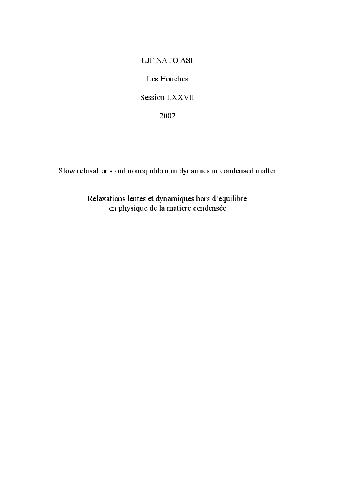
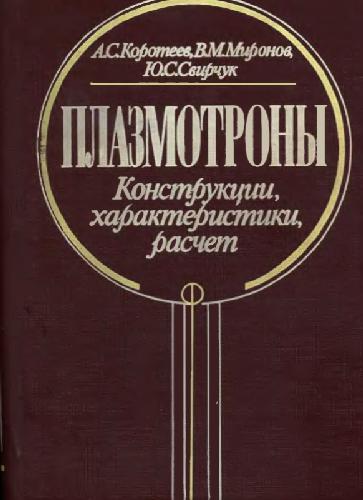

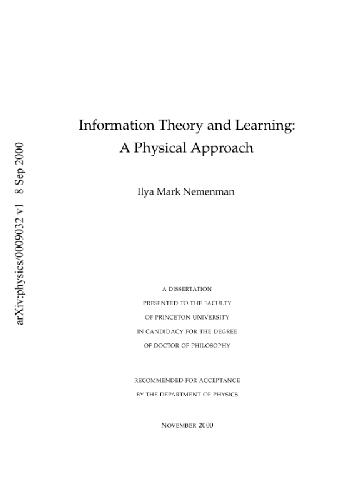
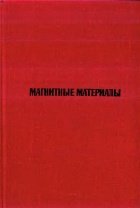
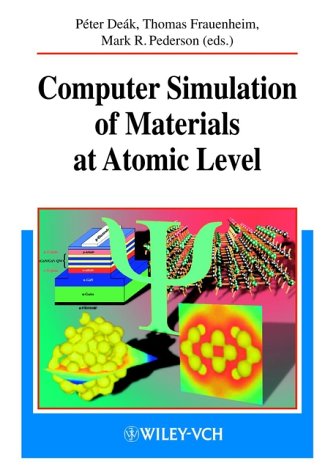
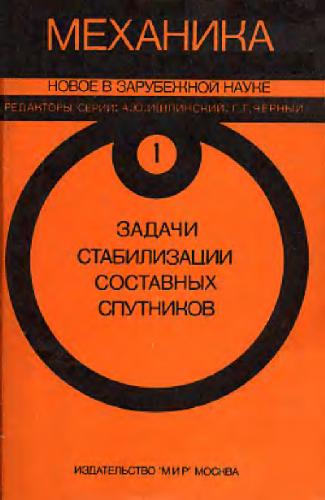
Reviews
There are no reviews yet.